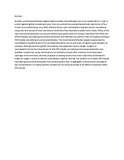Broad neutralization coverage of HIV by multiple highly potent antibodies.

View/
Date
2011Author
Walker, LM
Huber, M
Doores, KJ
Falkowska, E
Pejchal, R
Julien, JP
Wang, SK
Ramos, A
Chan-Hui, PY
Moyle, M
Mitcham, JL
Hammond, PW
Olsen, OA
Phung, P
Fling, S
Wong, CH
Phogat, S
Wrin, T
Simek, MD
Protocol G Principal Investigators
Koff, WC
Wilson, IA
Burton, DR
Poignard, P
Type
ArticleLanguage
enMetadata
Show full item recordAbstract
Broadly neutralizing antibodies against highly variable viral pathogens are much sought after to treat or protect against global circulating viruses. Here we probed the neutralizing antibody repertoires of four human immunodeficiency virus (HIV)-infected donors with remarkably broad and potent neutralizing responses and rescued 17 new monoclonal antibodies that neutralize broadly across clades. Many of the new monoclonal antibodies are almost tenfold more potent than the recently described PG9, PG16 and VRC01 broadly neutralizing monoclonal antibodies and 100-fold more potent than the original prototype HIV broadly neutralizing monoclonal antibodies. The monoclonal antibodies largely recapitulate the neutralization breadth found in the corresponding donor serum and many recognize novel epitopes on envelope (Env) glycoprotein gp120, illuminating new targets for vaccine design. Analysis of neutralization by the full complement of anti-HIV broadly neutralizing monoclonal antibodies now available reveals that certain combinations of antibodies should offer markedly more favourable coverage of the enormous diversity of global circulating viruses than others and these combinations might be sought in active or passive immunization regimes. Overall, the isolation of multiple HIV broadly neutralizing monoclonal antibodies from several donors that, in aggregate, provide broad coverage at low concentrations is a highly positive indicator for the eventual design of an effective antibody-based HIV vaccine.
URI
http://www.ncbi.nlm.nih.gov/pubmed/21849977http://erepository.uonbi.ac.ke:8080/xmlui/handle/123456789/57530
Publisher
Macmillan Publishers
